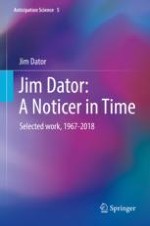2019 | OriginalPaper | Buchkapitel
27. The Honolulu Electronic Town Meeting
verfasst von : Jim Dator
Erschienen in: Jim Dator: A Noticer in Time
Aktivieren Sie unsere intelligente Suche, um passende Fachinhalte oder Patente zu finden.
Wählen Sie Textabschnitte aus um mit Künstlicher Intelligenz passenden Patente zu finden. powered by
Markieren Sie Textabschnitte, um KI-gestützt weitere passende Inhalte zu finden. powered by
